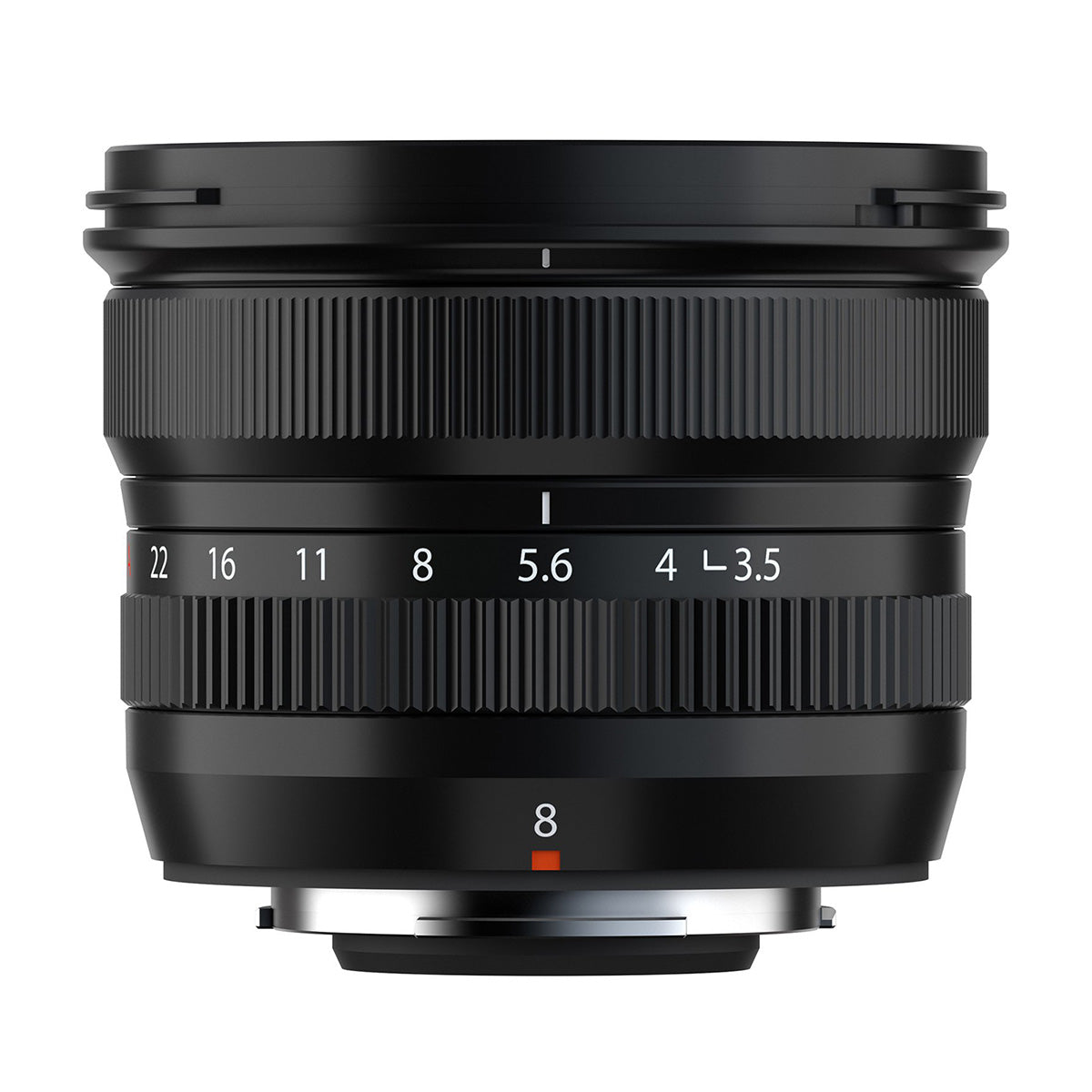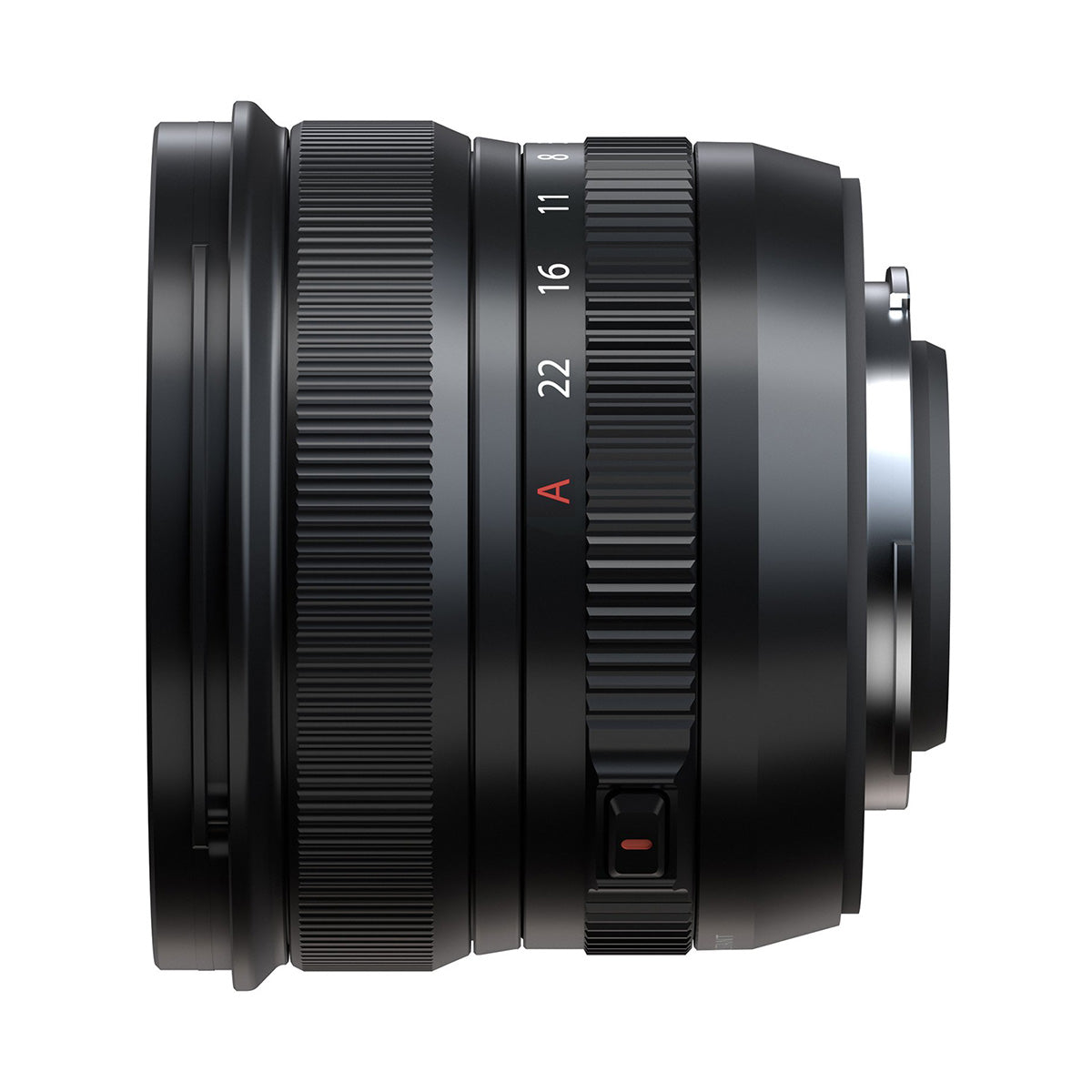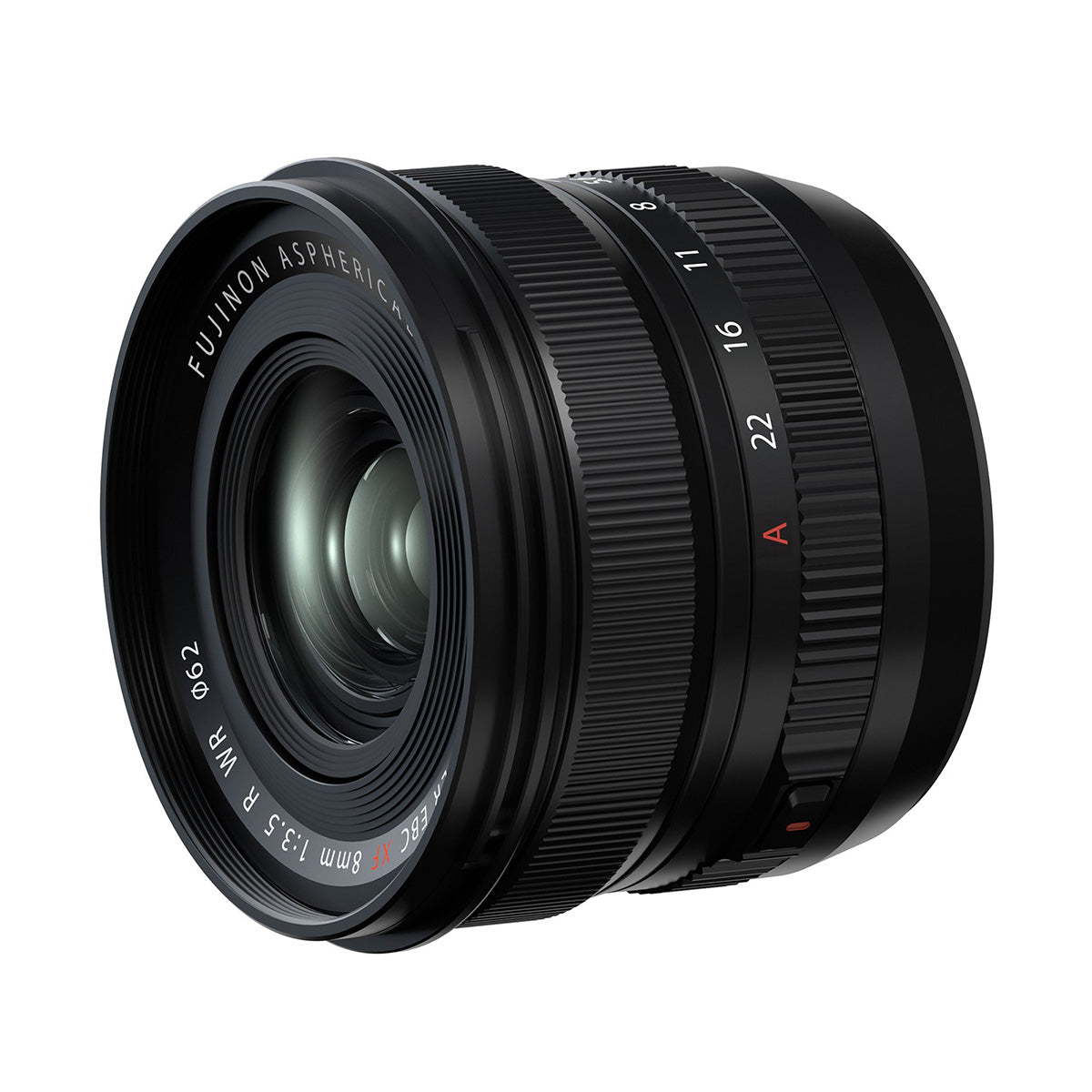What we think...
Product Description
Fujifilm XF 8mm F3.5 R WR Lens: Capture the World in Ultra-Wide Perspective
Expand Your View with Unmatched Clarity
Introducing the Fujifilm XF 8mm F3.5 R WR lens, designed to offer an unparalleled ultra-wide-angle view for your APS-C format Fujifilm X-mount mirrorless camera. This lightweight and compact lens, with a full-frame equivalent focal length of 12mm, provides an expansive field of view that is perfect for a wide range of photography styles, including landscapes, architecture, and video applications such as vlogging.

Key Features
- Ultra-Wide Field of View: With an 8mm focal length (12mm equivalent in full-frame format), this lens captures a dynamic perspective, making your subjects appear closer while pushing the background to infinity.
- Advanced Optical Design: Incorporates two extra-low dispersion (ED) elements and three aspherical elements to minimize lens aberrations and distortion, ensuring sharpness and clarity across the entire frame.
- Rectilinear Design: Reduces distortion, maintaining straight lines and ensuring vertical lines in a scene stay true in the resulting images and video.
- Lightweight and Compact: Weighing only 215g (7.6 oz) and measuring 52.8mm in length, this lens is perfect for on-the-go photography and travel.
- High-Resolution Compatibility: Engineered to work seamlessly with Fujifilm’s latest 40-megapixel X-Trans sensors, delivering exceptional detail and edge-to-edge clarity.
- Fast and Quiet Autofocus: Features an inner focusing mechanism with low focus breathing, making it ideal for both video and still photography.
- Versatile Filter Thread: The 62mm filter thread allows for easy attachment of various filters, such as neutral density (ND) or polarizers, enhancing creative possibilities.
- Weather-Resistant Construction: Designed to withstand dust, moisture, and temperatures as low as -10°C (14°F), ensuring reliable performance in harsh conditions.
Detailed Specifications
- Focal Length: 8mm (12mm equivalent in full-frame format)
- Aperture Range: f/3.5 to f/22
- Optical Design: 12 elements in 9 groups (including 3 aspherical elements and 2 ED elements)
- Minimum Focusing Distance: 18cm (7 inches)
- Filter Thread: 62mm
- Dimensions: 68.8mm (diameter) x 52.8mm (length)
- Weight: 215g
- Mount: FUJIFILM X-mount
- Weather Sealing: Dust and moisture-resistant, capable of operating at -10°C (14°F)

Why Choose the Fujifilm XF 8mm F3.5 R WR Lens?
This lens offers unmatched versatility and performance for photographers and videographers alike. Whether you’re capturing the vastness of a landscape, the intricate details of architecture, or creating dynamic vlog content, the XF 8mm F3.5 R WR lens delivers stunning results. Its advanced optical design ensures sharpness and clarity, while the lightweight, weather-resistant build makes it a reliable companion in any condition.
Perfect for Capturing Expansive Scenes
The XF 8mm F3.5 R WR lens captures wide expanses with edge-to-edge clarity, making it ideal for landscape photography. Its ultra-wide-angle view allows you to fit more into your frame, whether it's the sweeping vistas of nature or the grandeur of architectural marvels. The rectilinear design ensures minimal distortion, so your images look natural and true to life.
Compact and Portable Design
Despite its powerful capabilities, this lens remains compact and lightweight, making it an ideal choice for travel photography. The 62mm filter thread expands your creative potential by allowing the use of various filters, perfect for long-exposure shots and enriched landscape photography.
Order Now and Elevate Your Photography
Don’t miss the chance to enhance your photographic journey with the Fujifilm XF 8mm F3.5 R WR lens. Order now and experience the perfect blend of ultra-wide perspective, advanced optics, and robust build quality. Capture the world in stunning detail and vibrant color with this exceptional lens.

| LENS CONFIGURATION | 12 elements in 9 groups (includes 3 aspherical and 2 ED elements) |
| FOCAL LENGTH (35MM FORMAT EQUIVALENT) | 12mm |
| ANGLE OF VIEW | 121° |
| MAX APERTURE | F3.5 |
| MIN APERTURE | F22 |
| APERTURE CONTROL | 9(rounded diaphragm opening) |
| FOCUS RANGE | 18cm-∞ |
| MAX MAGNIFICATION |
0.07x |
| EXTERNAL DIMENSIONS (DxL) | 68mm×52.8mm |
| WEIGHT | 215g |
| FILTER SIZE | 62mm |
Try The Kit - Fujifilm Loan

Try Before You Buy – Free Next Day Delivery
Test selected Fujifilm gear with a 48-hour free trial or hire for up to 7 days at a low cost. Book anytime via the 24/7 live system.
How It Works:
-
Book Your Kit: Choose your dates and reserve your gear online, 24/7.
-
Pay a Deposit: A refundable deposit is due before dispatch. You’ll get it back once the kit is returned in good condition.
-
Fast Delivery: Your kit arrives by courier in secure packaging – or collect it from a partner store.
-
Easy Returns: Use the original box and pre-paid label to send it back. We’ll collect it, or you can drop it off.
Visit https://fujifilm-loan.trythekit.com to book yours today.
Fujifilm - General Product Safety Regulation (GPSR)
Payment & Security
Your payment information is processed securely. We do not store credit card details nor have access to your credit card information.






















